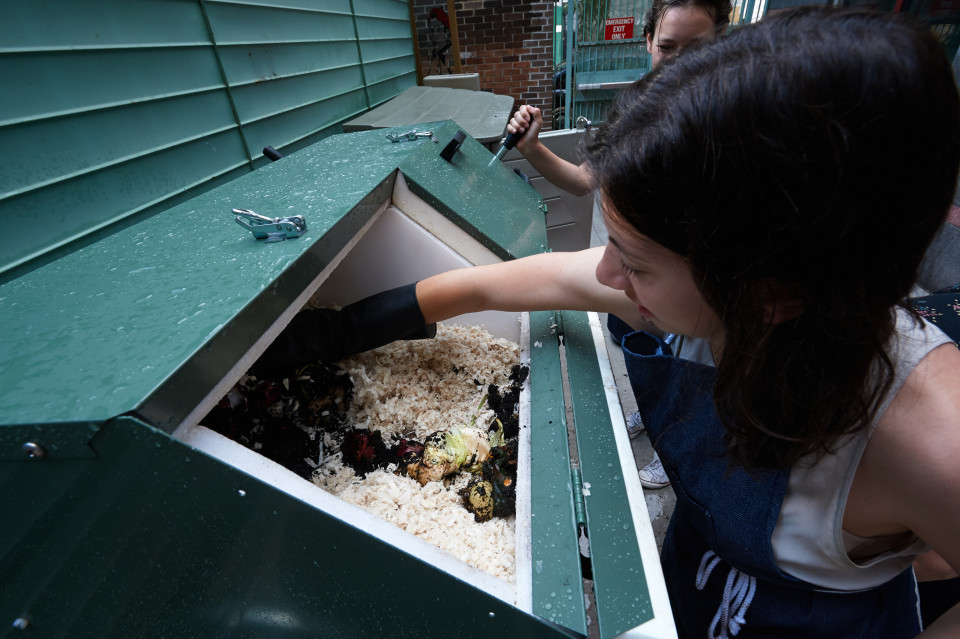
FIT’s commitment to sustainability is front and center this week, hitting The Wall Street Journal print [PDF] and online in a feature article reaching more than 2.5 million people on social media. The article details how Lydia Baird ’16 and Willa Tsokanis ’16, both Textile Development and Marketing students, teamed up to develop the FIT Muslin Compost System, a method of composting the cotton muslin that fashion design students discard after using it to test drape and fit as part of their creative process. The story, which first appeared first online on August 19, caught the attention of Chelsea Clinton, the Clinton Foundation, and Clinton Global Initiative University, all of whom posted it to their Facebook and Twitter accounts.
How 2 @CGIU students at @FIT turned cotton waste into compost, which now is helping grow natural dyes: http://t.co/lpYyjDG6Ig
— Chelsea Clinton (@ChelseaClinton) August 19, 2015
As noted in a recent Newsroom post (July 27), Baird and Tsokanis took the composting idea to the Clinton Global Initiative University (CGIU) ― built on the successful model of the Clinton Global Initiative and established to engage the next generation of leaders on college campuses to take action on global challenges ― where it generated significant attention. Thanks to FIT’s quick approval and funding, the compost system has now been fully implemented on the FIT campus to feed the soil of the college’s green spaces (including FIT’s Natural Dye Garden), manage water use, and reduce dependence on pesticides.
FIT’s institutional support of the composting initiative is just one manifestation of the college’s longstanding and substantial commitment to sustainability. Sustainability is infused into the college, from its strategic plan to its curriculum to its facilities and much more. The FIT Sustainability Council was established by FIT president Dr. Joyce F. Brown in 2009, the same year that FIT signed on to the Mayor’s Carbon Challenge. Of the 17 colleges and universities that signed on, only five met the goal early – and FIT not only met its goal in less than half the allotted time, but was the first to do so. By 2011 the college had exceeded the 30 percent reduction goal by 10 percent for a total reduction of 40 percent. By 2013, the reduction was 40.8 percent, far above any other institution.
As part of the effort to reduce carbon emissions and increase the efficiency of buildings’ heating and cooling systems, FIT has installed green roofs. To make environmental awareness and activism more accessible to students, the curriculum provides programs and courses that focus on or incorporate sustainability, including a graduate-level certificate program in Sustainable Interior Environments. Water bottle refilling stations have been installed throughout campus, which have, to date, saved more than 500,000 plastic bottles from being used, as have low water washing machines in residence halls—and the college has an excellent recycling system, which is explained in “Where Does FIT’s Garbage Go?” The Sustainability Council, with members comprised of faculty, administrators, and students, organizes an annual all-day conference, represents FIT at eco-events, and gives grants for college sustainability initiatives, among other activities.
